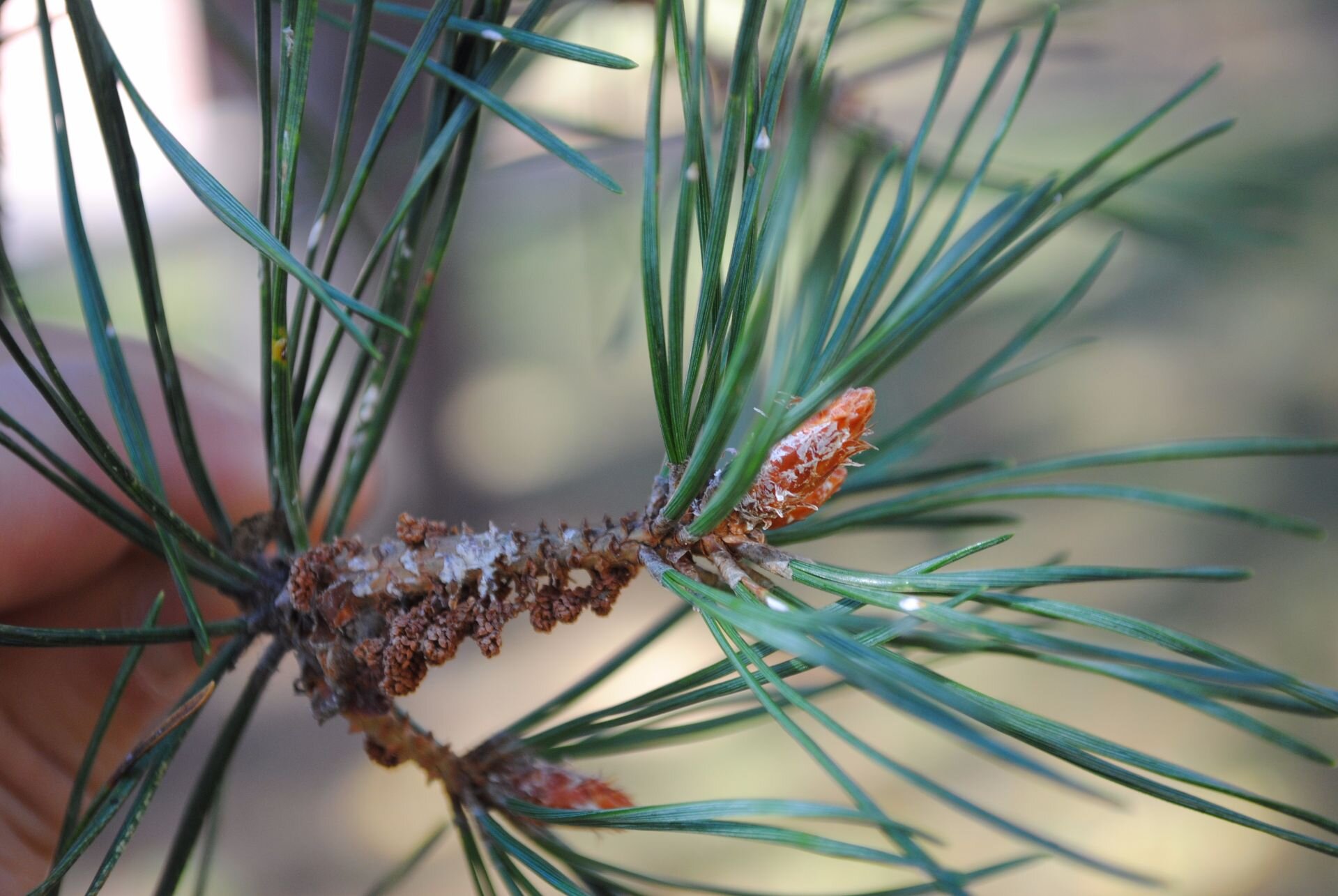Scotch Pine
COMMON NAME: Scotch or Scots pine
SCIENTIFIC NAME: Pinus sylvestris
FAMILY: Pinaceae
USDA Hardiness Zone: Zones 3 to 7
Origin: Introduced from Europe in the 1700’s.
Growth Habit: On sites with above average soil and irrigation this can be a fast growing tree when young. Mature height is 50’ - 60’ with a spread of 25’- 30’. More pyramid-shaped as a young tree becoming open and irregularly shaped as a mature tree.
Leaves: Needles in bundles of two from 2-4” long, usually twisted and persistent for about 3 years. Leaf margins are minutely toothed and needles are usually light green in color.
Twigs: Young twigs are greenish brown turning brown with age.
Fruit: Cones mostly solitary to 2-3 together ranging from 1-1/2” to 3” long, gray to brown and falling at maturity.
Bark: This is one of the tree’s best features. The bark is orange, thin and smooth on the upper trunk often peeling in papery flakes with maturity. The lower trunk tends toward orangish-brown to gray becoming fissured into longitudinal plats with maturity. The open branching habit of the tree shows off the attractive bark all year long.
Landscape Value: The attractive bark makes this a very interesting tree. It is versatile in the landscape as a screen or individual specimen. There are mature trees growing on the campus of Western State Colorado University in Gunnison, which displays the tree’s cold hardiness.
How it will do in Colorado: A common landscape tree also frequently planted for windbreaks and screens. Scotch pine is adaptable to a variety of soil types from somewhat basic (i.e., pH above 7.5) to acidic. This tree grows in Colorado landscapes up to 8000’ elevation. Scotch pine is a very popular Christmas tree and accounts for nearly 30% of all trees grown for this use.
Insects and Diseases: Susceptible to Mountain pine beetle and other barks beetles especially when it is in a stressed situation. Other insects known to affect this tree are Zimmerman pine moth, pine tortoise scale, pine needle scale and pine sawfly. In 2011, pine wilt nematode was positively identified on this tree species in Colorado.
Interesting Features: Scotch pine is the most widely distributed pine in the world.In its native habitat it can be found growing from Scandinavia near the Arctic Circle to the temperate Mediterranean region.
Cultivars: A small number of selections are available with interesting characteristics that include yellow needles in the winter (e.g., Aurea), broad dwarfy growth habit (e.g., Beuvronensis), bluish needles (e.g., Watereri), and columnar tight growing habit (e.g., Fastigiata).
Information Sources: Michael Dirr, Manual of Woody Landscape Plants (University of Georgia, 1990 Silvics of North America, Volume 1 Conifers, USDA Forest Service, Agriculture Handbook 654
Photo by: Bates College

